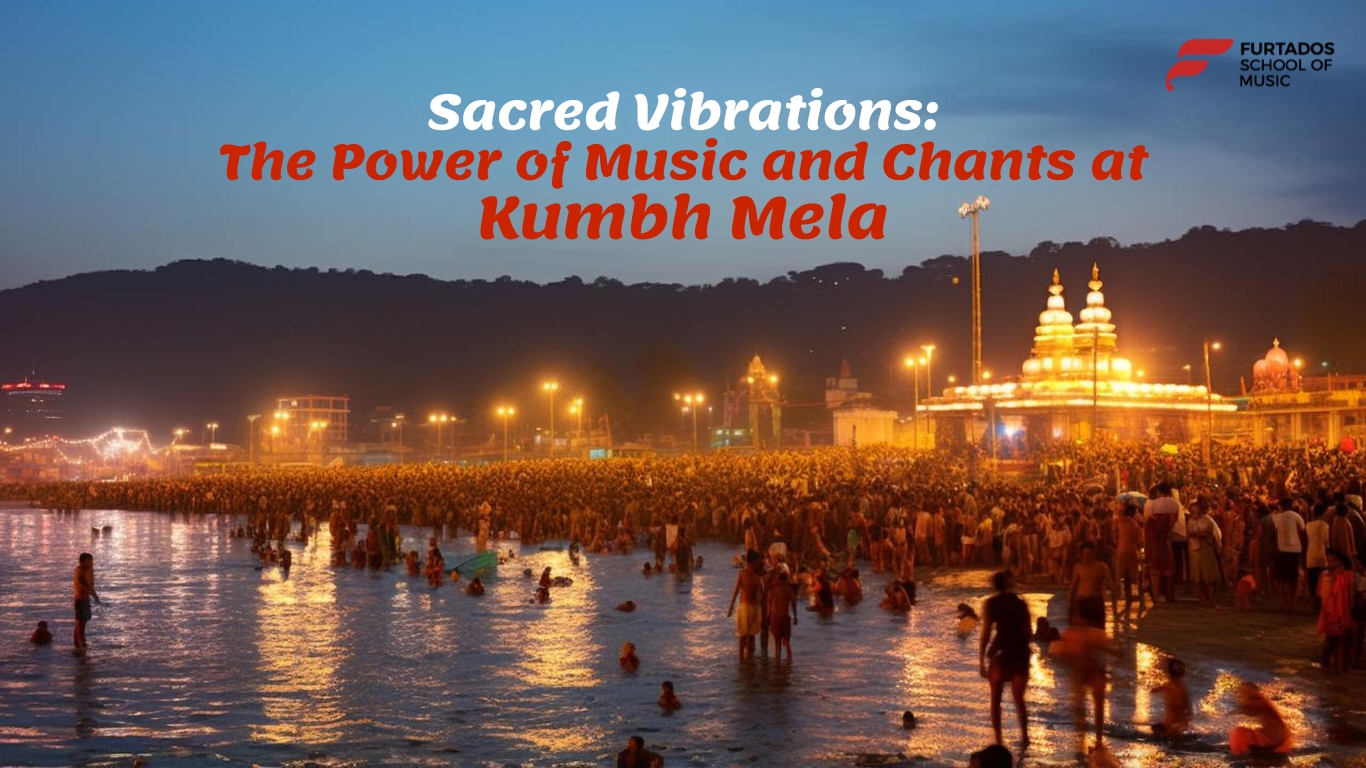The Kumbh Mela, the world’s largest spiritual gathering, is not just about the holy dip in sacred rivers; it is a journey of the soul, guided by the power of devotional music and chants. The moment a pilgrim embarks on this sacred path, the air resonates with the vibrations of mantras, bhajans, and kirtans, creating a divine soundscape that uplifts and purifies the spirit. These chants are not mere words but powerful invocations that align devotees with the cosmic energy of the universe.
Significance of Chants at Kumbh Mela
Chanting is a timeless spiritual practice deeply rooted in Hindu traditions. At Kumbh Mela, it serves multiple purposes:
- Spiritual Cleansing – Just as the holy rivers cleanse the body, chanting purifies the mind and soul.
- Energy Amplification – The collective chanting by millions creates high-frequency vibrations, intensifying the sacred experience.
- Divine Connection – Mantras act as direct links to divine forces, bringing devotees closer to the gods and goddesses they revere.
The synergy of sound, devotion, and sacred space makes Kumbh Mela a once-in-a-lifetime spiritual experience, where chanting becomes the heartbeat of the festival.
Chanting Throughout the Pilgrimage: A Journey of Vibrations
From the moment devotees begin their journey to Kumbh, they immerse themselves in continuous chanting. Whether traveling by foot, train, or vehicle, they sing bhajans, recite mantras, and play devotional instruments like dholaks and cymbals.
Upon reaching the sacred riverbanks, the energy of millions chanting together creates an almost trance-like state. Pilgrims describe feeling an unexplainable spiritual pull, as if the universe itself is resonating with their devotion. The chants not only uplift the individual soul but also unify the collective consciousness of the gathering.
Prominent Chants and Their Significance
Among the countless hymns sung at Kumbh Mela, two stand out for their power and significance:
“Jai Siya Ram” – The Mantra of Divine Love and Dharma
The chant “Jai Siya Ram” glorifies Lord Ram and Goddess Sita, symbolizing devotion, righteousness, and balance. Unlike “Jai Shree Ram,” which focuses solely on Ram, this mantra emphasizes the presence of Sita, representing grace, purity, and strength
Why is it important at Kumbh
- Reinforces faith in righteousness (dharma)
- Encourages devotion and surrender to divine will
- Unites people, as it is a mantra of harmony and love.
Kumbh Mela Chalisa – The 40-Verse Devotional Hymn
The Kumbh Mela Chalisa is a special hymn that narrates the spiritual importance of the festival while invoking the blessings of deities like:
- Lord Krishna – For wisdom and devotion.
- Goddess Lakshmi – For prosperity and well-being.
- Goddess Durga – For strength and protection.
- Lord Ganesha – For the removal of obstacles.
- Lord Hanuman – For courage and unwavering faith.
Reciting the Kumbh Mela Chalisa at the sacred rivers amplifies its impact, ensuring a deep spiritual transformation for the devotee.
Conclusion: Surrender to the Journey and Keep Chanting
The Kumbh Mela is not just a religious event; it is a spiritual awakening. The power of devotional music and chanting guides pilgrims through an internal and external purification.
By continuously chanting, one surrenders to the journey, allowing divine vibrations to cleanse the heart, uplift the spirit, and dissolve ego. Whether it is “Jai Siya Ram,” the Kumbh Mela Chalisa, or any other sacred mantra, the act of chanting transforms the experience from a ritual into a transcendental.
See More: Furtados School Of Music
